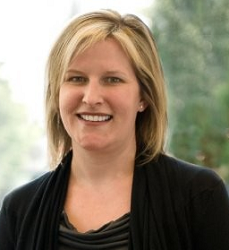Top Women in Retail Tech 2020
Retail has never undergone a faster pace of change than what it’s experiencing today. Luckily, industry leaders have been laying the technical foundation to innovate and succeed in a landscape of redefined retail.
RIS’ fourth annual look at the top women in retail tech salutes the female technologists blazing new trails and redefining what industry heroes look like. The women honored are deploying game-changing technology, leading and creating exceptional teams, and reimagining retail in the face of change.
RIS congratulates all the women who made this year’s list and salutes their tireless efforts to help shape the industry for the better!
Trina Gladwell
DVP, Merchandise Process, Bealls
Trina Gladwell has more than 40 years of retail experience, starting from the bottom as a college recruit in a management training program and working her way up to DVP of merchandise process at Bealls.
She has spent 16 years at Bealls, starting as outlet planning manager of new stores, reporting and system administration. Prior to her post at Bealls, Gladwell worked for Stage Stores for 24 years in multiple capacities, including store management, buyer, and VP of planning and allocation. She also served as director of inventory for Scholastic Book Fairs for three years.
Trina has a wealth of experience, knowledge and leadership skills under her belt, which she utilizes to automate Bealls’ merchandising capabilities. Leveraging SAS technology, Bealls has gone all-in on automated planning and allocation over the past three years, working toward an end goal of 95% automation in its allocation functions.
“Automation has been the predominate technology that has helped Bealls drive sales and efficiencies,” says Gladwell. “The supply chain no longer waits for review of each allocation, which allows for a faster product flow to the stores. We have seen good progression in the penetration of auto allocation; we are currently running between 85-90% auto allocation. Our allocation methodology continues to get faster and smarter based on a planned vision and strategy for multiple climates and customers.”
In addition, Gladwell and her team are implementing planning optimization at the retailer’s off-price banner, Bealls Outlet. The team has developed a system of automated review and updates of store plans based on weekly demand signals. With more than 500 stores in 17 states and 800-plus merchandise hierarchy levels, it is extremely labor intensive for planners to review all the data each week to identify trends and changes in customer demand, making automation a necessity.
“When combined with our auto allocation process we are reducing time in our supply chain even further between customer demand and in-stock positions,” she says. “Additionally, plan changes are incorporated with the financial plan to give the buyer clear direction as to emerging product needs so they can immediately react.”
Angela Hsu
Senior Vice President of Marketing and eCommerce, Lamps Plus
Angela Hsu seized an opportunity and joined Lamps Plus in 2003 to build its marketing and e-commerce functions from the ground up — the retailer was a category leader in brick and mortar at the time, but relatively new in e-commerce. Today, she leads marketing and e-commerce for Lamps Plus and manages a team of 40.
“I had the opportunity through the leadership of our founder/CEO to assemble and then collaborate with a talented team for Lamps Plus,” says Hsu. “It has been rewarding to see the company’s digital business evolve from a single digit to several hundred million dollars in annual sales.”
Hsu is most proud of what Lamps Plus has accomplished in website multivariate testing and personalization.
“We are an early adopter in this area,” she notes. “Over the past decade, we have progressed from personalized product recommendations to personalized site content and layout based on browsing behavior, historical purchase, device type, geo location, referring URLs and weather.”
Hsu and her team use multivariate testing to validate their hypothesis in personalization tactics before rolling out to the entire site. At any given point in time, the team runs more than 100-plus multivariate tests.
Recently, her team deployed a customer data platform (CDP), creating a single unified view of the retailer’s customers. Utilizing artificial intelligence, Lamps Plus is able to analyze past behaviors and predict purchase intent and product affinity.
“The technology allows us to optimize our marketing campaigns with hyper-targeted personalized messaging at scale and provide a better overall customer experience,” explains Hsu. “I see further adoption and testing within our organization in leveraging predictive analytics in website personalization and marketing campaigns in the coming year.”
This year, Hsu says the team is also exploring anonymous personalization, which she notes is powerful for multichannel retailers that don’t have a large number of login users in a cross-device and cross-channel shopping environment.
“With implementation later this year, we will be able to personalize the shopping experience from a user’s first time visiting our website,” she says. “This will take our customer shopping experience to the next level.”
Tammylynne Jonas
Global CIO, Self Esteem Brands
The entire retail industry is reeling from widespread store closures as the nation looks to lessen the spread of COVID-19. Among the hardest hit have been gyms and fitness facilities, which were in the first wave of closures and may be among the last allowed to reopen their doors.
While this halt to operations has certainly had massive negative impacts on the bottom line, savvy, forward-thinking organizations are using this time to expand their offerings and solidify their relationships with their members.
“This is a prime opportunity for us to listen to our customers,” says Tammylynne Jonas, global CIO, Self Esteem Brands. “We have a captive audience and an opportunity to try new things. Our customers have more time to engage and fewer distractions. We should all be accelerating the pace at which we release new functionality. Fast is better than perfect. It’s okay to be scrappy, and not everything will work. Use this time to take some risks and see how your customers respond.”
Jonas has been at Self Esteem Brands, the parent company of Anytime Fitness, Waxing the City, Basecamp Fitness and the Bar Method, for a little more than a year. Prior to joining Self Esteem Brands, the retail veteran was with Holiday Stationstores (acquired by Circle K) and spent 15 years at Kohl’s in various technology and operations roles.
Prior to the COVID-19 outbreak, Jonas and her team were already hard at work developing digital engagement tools. That proactive approach has served the organization well in the face of social distancing restrictions.
“The technology we build in the fitness space is all about giving our members 24/7 access to tools that help them lead healthier lives,” says Jonas. “Whether it is technology to access digital workouts, or to interact with a virtual coach, we meet our members where they are. We need to drive a real connection with our membership. Strong connections drive stronger retention and healthier outcomes.”
Eileen Mahoney
CIO, PVH
In an industry that’s all about product, PVH CIO Eileen Mahoney is using technology to transform the fashion merchandise lifecycle — whether that’s design, assortment or increasing speed to market.
As leader of the global technology and process group and a PVH corporate officer, Mahoney develops the strategic direction for the company’s technology and platform solutions, business process and transformation, as well as portfolio management. She’s been with the company since 2008 and took the CIO helm in 2014.
Mahoney is a member of JDA’s Customer Advisory Board, Salesforce’s CIO and Retail Advisory Councils, SAP Consumer Products and Fashion Councils, and the founder of PVH’s Women’s BRG (Upward).
“I have been working in the retail technology space for over 30 years. In those 30 years, women have evolved into more leadership roles within the technology space, but we still have work to do in this area,” says Mahoney. “We need to continue to provide encouragement and opportunities for women to excel in what is still a very male-dominated discipline.”
Mahoney dedicated three years toward developing a go-to-market strategy and roadmap leveraging 3D design for product creation, digital assortment planning and selling tools. Her work transformed the product creation process into one that’s completely digitized, thereby reducing samples and increasing speed to market.
The initial pilot saw PVH’s Heritage sportswear team digitally design a spring capsule collection in just four days — and sell styles to a wholesaler without producing a single project sample.
Mahoney is certainly no stranger to retail tech leadership. When PVH acquired the Tommy Hilfiger brand in 2010 — and its accompanying 200-plus North American stores — she directed the integration of the region’s retail division into the PVH retail technology platform.
The nine-month-long integration and transformation provided the new business partners with an enterprise planning and allocation solution, complete retail ERP system and new POS platform, as well as a data warehouse platform for real-time reporting and analytics.
For now, her top-of-mind goals include continuing her work on simplifying PVH’s enterprise architecture, finishing digitizing the application portfolio, and providing end-to-end solutions to its business partners.
“Once I complete that, I can happily retire,” she says.
Sarah Rasmusen
SVP, E-Commerce and Chief Customer Officer, Lands’ End
Sarah Rasmusen is the first to admit that there isn’t a retailer out there who’s not searching for the perfect pricing and promo strategy.
But as senior VP of e-commerce and chief customer officer for Lands’ End, she’s also pleased with the results her company has achieved — as well she should be. With more than two decades of digital strategy experience, Rasmusen leads Lands’ End’s e-commerce business for U.S. direct, international and Lands’ End Business Outfitters. She also chiefs the data analytics team and customer care operations.
While she’s led many successful product launches, her proudest project — serving as chief customer officer — is a constant work in progress.
“It’s not lost on me that no matter what cool tech development comes along, I must not lose sight that I’m now in charge of protecting Lands’ End’s most precious asset — its customers,” Rasmusen says.
Rasmusen and her team have been working tirelessly to evolve the company to meet today’s new type of consumer. When she first arrived at Lands’ End in 2017, the company’s mobile experience was far from advanced.
“Our mobile experience at the time was basically a catalog stuffed into a desktop website, stuffed down to a phone,” she says. “The last several years have meant a large investment in our mobile experience, being extremely mindful of the CX for our core customer. Continuing to refine and improve the mobile experience will continue to be a beacon for our product management, CX and IT teams.”
At times, getting her teams where they should be has required a level of assertiveness that other women in tech are likely familiar with. “Women have played leadership roles in retail for a long time, so female leaders are rarely ‘new news’ in our industry,” she says. “Breaking through on the tech side has been a little more challenging.
“There have been many, many times — and this still happens — where I have to stare down a tech partner and insist, ‘Yes, you’re talking to the right person and, no, I’m not going to ask our CIO to join this conversation for you make your point.’”
Kemper Seay
VP of Infrastructure and Chief Information Security Officer, Carter’s
Kemper Seay’s passion for delivering transformational projects was fostered early on by her career in consulting at Sapient during the dot-com boom. This passion would eventually lead her to the project she’s most proud of: bringing Carter’s and Oshkosh B’Gosh online with e-commerce for the first time.
“It is very rare that you get the privilege of bringing two 150-year-old, iconic American brands online for the first time,” Seay exclaims.
Following consulting, Seay went to work at The Home Depot where she ran a re-platform of the Homedepot.com website and order management system. She spent several years there, running the PMO (project management office) and a portion of the e-commerce business until, in 2009, she was hired by Carter’s to build their online presence.
For more than eight years Seay led cross functional teams, business, and technology to launch and ultimately run the rapid growth of Carters.com and Oshkosh.com.
“We picked best-in-class technology with Salesforce Commerce Cloud and IBM Sterling OMS to power a business that has skyrocketed since 2010,” she notes. “My favorite part of the journey has been that in addition to bringing the brands online came the ability to build world-class teams and their careers along the way.”
Seay rejoined Carter’s IT department three years ago to manage a large portion of the shared services team and has recently added the role of CISO to her resume. She notes that IT disciplines have vastly expanded over her career to include new areas of expertise, such as cyber security, library sciences, artificial intelligence, and data analytics.
As the disciplines have evolved, so too has the talent pool filling the roles.
“With this expansion in disciplines, and the need for more and more talent in our organizations, we are seeing more and more women in IT and, as an extension, in IT leadership positions,” says Seay. “This was evident when I was talking to my daughter this week about our security team, and I mentioned that we currently have an all-female leadership team.”


.jpg?itok=HHh53DB5)





